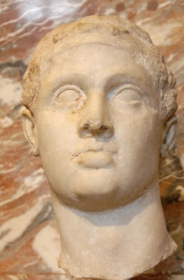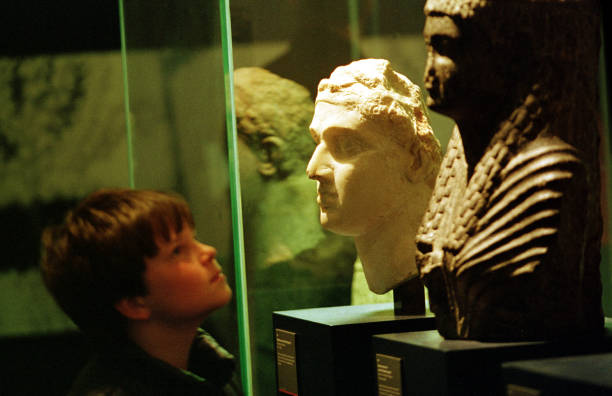Ptolemy II (Philadelphus lover of his sister) (284-246 BC)
Known by the title “Philadelphus”, meaning “lover of his sister,” Ptolemy II married his sister “Arsinoe” and named a city after her. He is famous for constructing numerous canals connecting Egypt to the Red and Mediterranean Seas, but his most significant achievement was the construction of the Lighthouse of Alexandria. He also founded a city in the Fayum region for his beloved wife, Arsinoe.

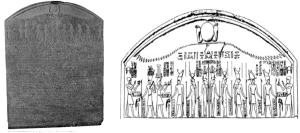
uez National Museum Painting – Bitum Painting (Tell Al-Maskhota) Archaeological evidence of existence of a canal linking the Nile with the Red Sea from the reign of Ptolemy II
Ptolemaic coin
Ptolemaic coin with a bust of Ptolemy III
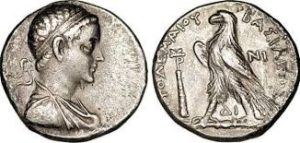
Ptolemy IV “Philopator = lover of his father “ (221-205 BC)
During Ptolemy IV’s reign, Egypt faced increasing threats from its neighbors. This period marked a decline from the prosperity achieved under Ptolemy III. Ptolemy IV in pharaonic clothes, present light offerings to god Re-Hor-achti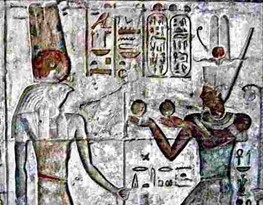
Ptolemy V “Epiphanes= the apparent” (205-180 BC)
He ascended to the throne after the death of his father, Ptolemy IV, when he was only five years old. Both Antiochus, the King of Syria, and Philip, the King of Macedonia, were appointed as his guardians. This created an opportunity for both to covet Egypt’s external territories. Indeed, Egypt lost the Syria and Phoenicia to Antiochus, and the Aegean islands to Philip. As a result, the Ptolemaic Empire was significantly diminished.
Stone tablet with a cartouche of Ptolemy V
Stone tablet with a cartouche of Ptolemy V Epiphanes (the apparent)
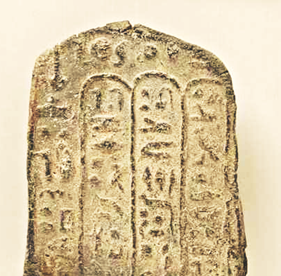
Ptolemy VI “Philometor = lover of his mother (186-145 BC)
He assumed the throne after the death of his father, Ptolemy V, and shared the rule with his sister, Cleopatra II, and his younger brother, Ptolemy VII. The situation in Egypt continued to deteriorate until the Syrian king, Antiochus, seized power. As a result, we find a new phenomenon in Egyptian temples, specifically in the Temple of Edfu, where the cartouches are written without names
Ptolemy VI worshipping the god Sobek
Ptolemy VI worshipping the god Sobek, from the Temple of Kom Ombo
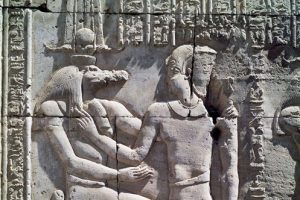
Ptolemy VII
“Philometor = lover of his father”(163-145 BC) After the death of his brother Ptolemy VI, Ptolemy VII became sole ruler. He governed the portions of Egypt that had not fallen under the control of the Syrian king Antiochus IV. Due to this, he was one of the most prolific builders among the Ptolemaic kings, particularly in Upper Egypt. His construction projects included the second pylon of the Karnak Temple, the entrance to the Temple of Khonsu in Karnak, and additions to the construction in Esna, Dendera, and Edfu. Ptolemy VII offering sacrifices to the god Osiris
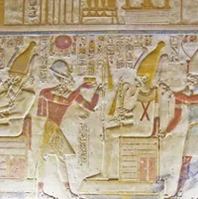
Ptolemy VIII
“Euergetes II = the good man or the giver” (169-116 BC) As the son of Ptolemy V and the younger brother of Ptolemy VI, Ptolemy VIII ruled Egypt for 54 years. However, he is considered one of the most Villainous figures in Ptolemaic history. He seized the throne while his brother was away on a military campaign. married his brother’s wife Cleopatra II (also his sister), and murdered her son on their wedding night. Even more shockingly, he then raped his stepdaughter Cleopatra III, married her, and fathered children with both Cleopatra II and Cleopatra III. He had son Ptolemy IX from Cleopatra II and son Ptolemy III from Cleopatra III. When Cleopatra II learned of her daughter’s marriage to Ptolemy VIII, she revolted. Ptolemy fled to Rome with Cleopatra III and their son (Ptolemy IX). Upon hearing of the rebellion in Alexandria, he ordered to kill his son Ptolemy IX and sent his body in cuts to his mother. Six years later, he reconciled with Cleopatra II and returned to Egypt with Cleopatra III. All three were depicted together on the temple at Kom Ombo. After Ptolemy VIII’s death, Cleopatra II and Cleopatra III ruled jointly. Following Cleopatra II’s death, Cleopatra III ruled with her son Ptolemy X.
Royal bust of Ptolemy VIII
Royal bust of Ptolemy VIII – Louvre Museum
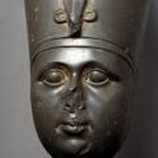
Relief depicting
Relief depicting Ptolemy VIII, Cleopatra III, and Cleopatra II before the god Horus, from the Temple of Kom Ombo
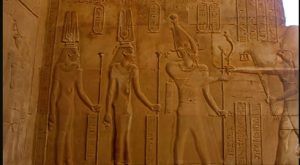
Royal bust of Ptolemy IX
Royal bust of Ptolemy IX, discovered in Memphis, now in the Museum of Fine Arts, Boston

Ptolemy X Alexander I (107-89 BC)
He was the son of Ptolemy VIII and the brother of Ptolemy IX. He ruled Egypt jointly with his mother, Cleopatra III. As the saying goes, ‘Those who live by the sword die by the sword,’ Cleopatra III incited her husband, Ptolemy VIII, to kill her brother, Ptolemy IX. When her son, Ptolemy X, came of age, he had her killed and ruled alone. The people of Alexandria expelled him, and he was eventually killed on the island of Cyprus -Royal bust of Ptolemy X in pink granite – Berlin Museum

Ptolemy XI Alexander II (80 BC)
The son of Ptolemy X, he ruled after his father alongside Queen Cleopatra Berenice, whom he eventually killed. A revolt erupted in Alexandria, and he was assassinated. -Ptolemaic coin of Ptolemy XI
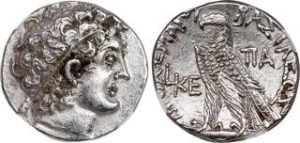
Ptolemy XII
“Auletes= the Piper” (80-51 BC) An illegitimate son of Ptolemy IX and the father of Cleopatra VII, he ruled after the death of Ptolemy XI with the support of Rome. This effectively placed Egypt under Roman dominion. During his reign, the Temple of Edfu was completed in 57 BC, and his image decorated its façade.
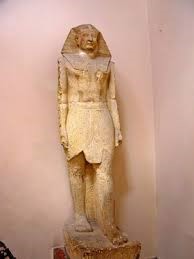
Ptolemy XIII
“Theos Philopator” (51-47 BC) Upon Ptolemy XII’s death, his son Ptolemy XIII and daughter Cleopatra VII inherited the throne. Cleopatra, being seven years older, became the dominant figure. Their rivalry led to a protracted civil war, during which both appealed to Julius Caesar for support. Tragically, the Library of Alexandria was accidentally burned during this conflict. Julius Caesar arrived in Egypt to pursue his enemy Pompey, who was killed by Alexandrians. Before Caesar could resolve the dispute between Ptolemy XIII and Cleopatra, Ptolemy and his forces besieged Cleopatra in her palace. In a clever ruse, Cleopatra had herself rolled up naked in a carpet and presented as a gift to Caesar. When Julius Caesar unfurled the carpet, he opened his mouth in astonishment, exclaiming that she was Aphrodite (the goddess of beauty in Greek mythology). He fell in love with her at first sight and helped her ascend to the throne. Her brother was killed, and she reigned alone -Royal bust of Ptolemy XIII with the royal diadem
